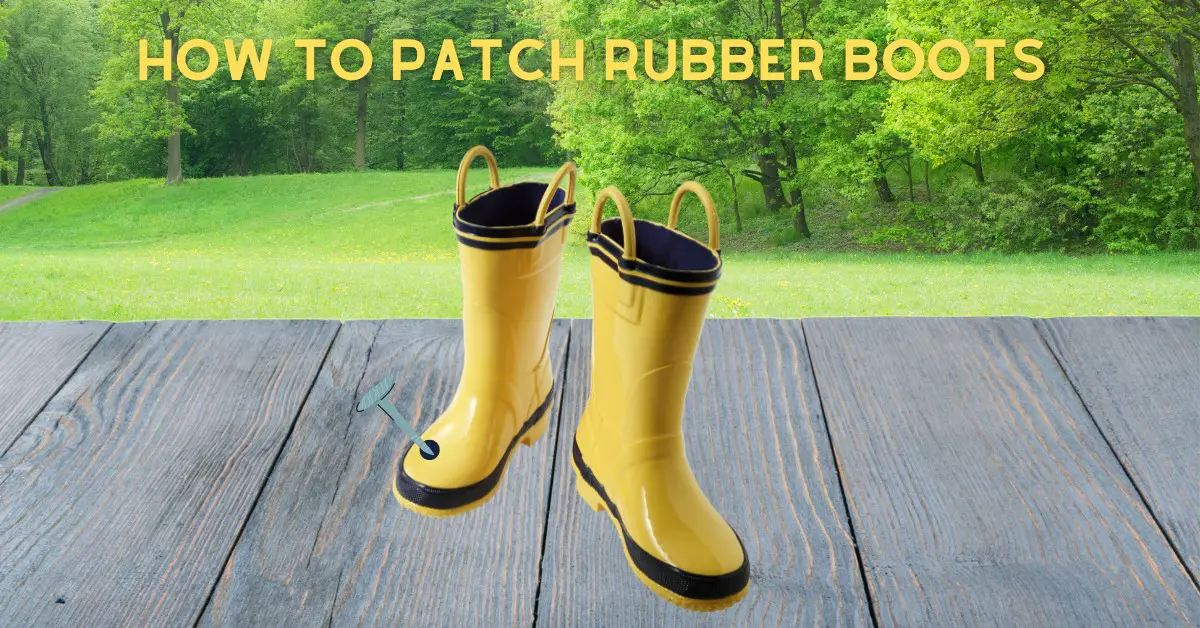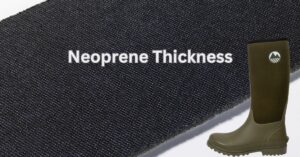How To Patch Rubber Boots
Rubber boots are generally pretty sturdy, but occasionally they split or get a puncture. For many people, leaky boots mean it’s time for a new pair. But if the rubber has only sustained a small split or puncture, there are several easy and cost-effective ways to patch and repair them.
A couple of things to be aware of:
1) The methods listed below are specifically for boots made from actual rubber. Many rain boots, especially cheaper boots are made from plastic and the methods listed below may not be effective on plastic boots.
2) If the area to be patched is located where there is a lot of movement, for example by the ankle, then the methods below might not be suitable. The patch may not stay in place for long and the boots will soon start to leak again.
Preparation is key to successfully patching of rubber boots
Before patching the boots the area to be patched is cleaned and completely dry. The area should be cleaned with warm water and mild detergent to get rid of any dirt and debris. Dry the area with a paper towel or hair dryer.
Using specialised rubber cement designed for shoe repair
Some rubber cement has been specially designed to repair shoes. The big brand name for shoe repair is Shoe Goo. The brand drys clear, so they are suitable for any boot colour. The repair should also be longer lasting than a regular rubber cement patch. definitely worth trying, especially as a tube of shoe repair rubber cement costs considerably less than buying a new pair of rubber boots
Last update on 2025-03-09 / Affiliate links / Images from Amazon Product Advertising API
How to use rubber cement to patch rubber boots
Rubber cement and a patch are often used to fix bicycle tire punctures and they can work well with rubber boots.
1) Apply a thin layer of rubber cement around the area of the boot that is being patched. Leave it for a few minutes to allow it to start drying.
2) Place the patch over the hole, making sure the glue is all the way to the edges. Then hold the patch against the boots for 2 minutes, until it adheres. Ideally, don’t wear the boots for 24 hours, allowing the rubber cement to fully dry
The patches that come with bicycle repair kits are often black, which is great if you have black coloured boots, but not so good for other colours. If you don’t fancy having a black patch on your non-black rubber boots, then there are a couple of possible options:
1) Utilizing rubber cement alone is a viable solution for boots with puncture-related damage; however, it won’t fix splits or other more severe damage.
2) If it’s possible, the rubber cement and patch can be applied on the inside of the boot. This will only work with boots that don’t have an inner lining.
How to use marine adhesive sealant to repair rubber boots
Using a marine adhesive sealant to repair rubber boots can be a great option. This type of sealant remains rubbery for a long time allowing the sealant to stretch and move with your boots. Other types of sealant may remain flexible for a short while, but eventually, they begin to harden and the repair will fail.
Last update on 2025-03-09 / Affiliate links / Images from Amazon Product Advertising API
The downside to using a marine adhesive sealant is that is difficult to make the repair look good. But, if you don’t care how the boots look and just want the the boots patched, then this is a great option which can last a long time.
Can i use super glue on rubber boots?
The problem with using super glue to patch rubber boots is that it dries hard and has no elasticity. This means that super glue is not good for repairing boots where flexibility is required. Super glue still might be suited for fixing trim on rubber boots, but not patching splits or holes.
Final thoughts about patching rubber boots
All of the repair options listed above should only be considered temporary. A lot depends on where the boots have been patched. If it’s on the shaft of the boot it will last a lot longer than a repair on the ankle section, where there is likely to be a lot more movement.
It can be quite difficult to get the repair to blend nicely with the rubber boots. So if you’re all about the look then repairing rubber boots might not be the best option for you!











